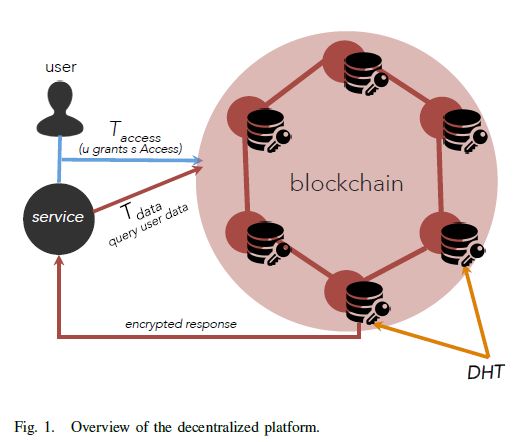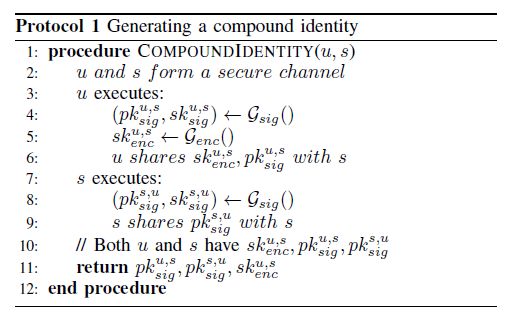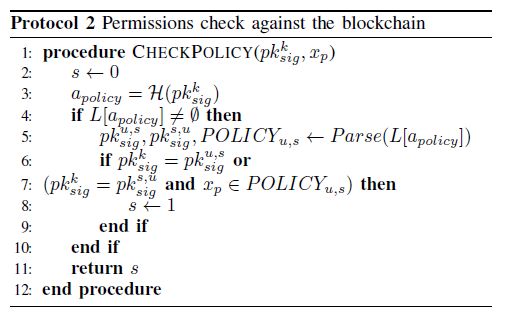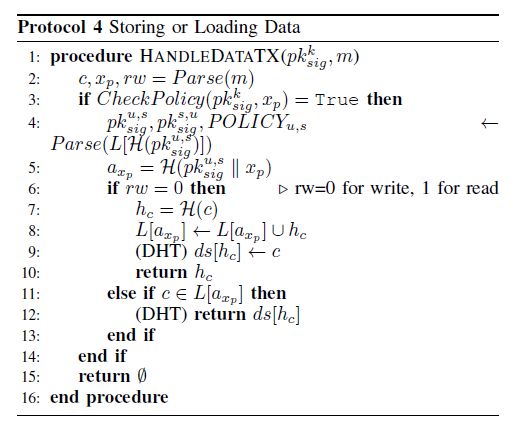- CentOS7下安装python3.8
讓丄帝愛伱
Linux编程语言
查看系统版本#查看系统版本cat/etc/centos-release>CentOSLinuxrelease7.2.1511(Core)uname-a>Linuxlocalhost.localdomain3.10.0-327.el7.x86_64#1SMPThuNov1922:10:57UTC2015x86_64x86_64x86_64GNU/Linux#查看python版本python-V>Py
- 在R中读入h5ad文件,并转换为seurat对象
拜托啦!狮子
r语言前端javascript
太可恶了要么就报错要么就卡住!!!!/(ㄒoㄒ)/~~library(Seurat)library(SeuratDisk)pbmc10kmono=paste0(path,'/pbmc10k/use_data/rna_mono.h5ad')1.Round1##方法1:通过h5Seurat中转#library(SeuratDisk)#Convert(pbmc10kmono,dest="h5seurat
- Python连接StarRocks全流程实践: SQL文件调用与Pandas混合优化
ToreanonyTang
pythonsqlpandas数据库开发语言
文章目录一环境准备与连接方法1.安装核心依赖库2.连接字符串配置3.多模式连接验证二SQL文件调用与动态执行1.外部SQL文件结构设计2.Python动态加载执行三Pandas混合使用技巧1.查询结果直接转DataFrame2.批量数据写入优化四深度性能优化策略1.StarRocks服务端优化2.Python客户端优化3.混合计算策略五完整业务场景示例1:用户转化漏斗业务场景实现代码公用表表达式(
- 进制转换(R转十)(1290. 二进制转换十进制、1292. 十六进制转十进制、1291. 八进制转十进制、1405. 小丽找潜在的素数)
是帅帅的少年
东方博宜OJ题库解析算法c++数据结构
题单地址:题单中心-东方博宜OJ这里以二进制转十进制为例(按位加权求和法)1290.二进制转换十进制问题描述请将一个25位以内的2进制正整数转换为1010进制!输入一个25位以内的二进制正整数。输出该数对应的十进制。样例输入111111111111111111111111输出16777215解析:按位加权(2^n)求和法。#includeusingnamespacestd;intmain(){st
- Linux系统中安装各种常用中间件
Vic2334
运维linux中间件运维
Linux安装docker安装docker定制软件源yuminstall-yyum-utilsdevice-mapper-persistent-datalvm2yum-config-manager--add-repohttp://mirrors.aliyun.com/docker-ce/linux/centos/docker-ce.repo安装最新版dockeryumlistdocker-ce--
- 【广告架构day1】爱奇艺广告系统的演进之路:实践中的一些经验
软件真理与光
业务技术架构后端
本文来自爱奇艺的分享孙立伟。近年来爱奇艺快速发展,优质内容层出不穷,爱奇艺广告也随之发展和壮大,广告在线服务同时服务于品牌、中小、DSP等不同客户,形成了可以满足不同需求类型的较为完善的商业广告变现布局,广告库存涵盖视频、信息流、泡泡社交(爱奇艺的社交平台)和开机屏等多种场景。爱奇艺效果广告是2015年开始全新搭建的一个广告投放平台,随着信息流业务的增长,整个投放平台也经历了一次大的架构调整和多次
- 分布式中间件:Redisson 入门和分布式锁
顾北辰20
分布式中间件分布式中间件redisson
分布式中间件:Redisson入门和分布式锁在分布式系统的开发中,处理并发问题是一个常见且具有挑战性的任务。为了确保数据的一致性和完整性,我们常常需要使用分布式锁。Redisson作为一个强大的分布式Java驻内存数据网格(In-MemoryDataGrid)中间件,为我们提供了简单且高效的分布式锁解决方案。本文将带你入门Redisson,并介绍如何使用它实现分布式锁。1.引入Redisson依赖
- uniapp 微信小程序 手机号快速验证组件 解密 encryptedData 获取手机号
睡不着的可乐
uni-app微信小程序
uniapp微信小程序手机号快速验证组件解密encryptedData获取手机号手机号快速验证组件该能力旨在帮助开发者向用户发起手机号申请,并且必须经过用户同意后,开发者才可获得由平台验证后的手机号,进而为用户提供相应服务。以下是旧版本组件使用指南,注意使用旧版本组件时,需先调用wx.login接口。建议开发者使用新版本组件,以增强小程序安全性。详情新版组件使用指南。因为需要用户主动触发才能发起手
- c++ Templates Guide
Benny.LIU
c++template
c++TemplatesGuide前言FunctionTemplatesClassTemplatesNontypeTemplateParametersTrickyBasicsUsingTemplatesinPracticeBasicTemplateTerminology前言Typeparametersareintroducedwitheitherthekeywordtypenameorthekey
- 深度学习与目标检测系列(三) 本文约(4万字) | 全面解读复现AlexNet | Pytorch |
小酒馆燃着灯
深度学习目标检测pytorchAlexNet人工智能
文章目录解读Abstract-摘要翻译精读主要内容1.Introduction—前言翻译精读主要内容:本文主要贡献:2.TheDataset-数据集翻译精读主要内容:ImageNet简介:图像处理方法:3.TheArchitecture—网络结构3.1ReLUNonlinearity—非线性激活函数ReLU翻译精读传统方法及不足本文改进方法本文的改进结果3.2TrainingonMultipleG
- 稳定运行的以Microsoft Azure SQL database数据库为数据源和目标的ETL性能变差时提高性能方法和步骤
weixin_30777913
etlazureetl云计算数据库
在以MicrosoftAzureSQLDatabase为数据源和目标的ETL(Extract,Transform,Load)过程中,性能问题可能会随着数据量的增加、查询复杂度的提升或系统负载的加重而逐渐变差。提高以MicrosoftAzureSQLDatabase为数据源和目标的ETL性能需要综合考虑数据库查询优化、数据加载策略、并行处理、资源管理等方面。通过合适的索引、查询优化、批量处理、增量加
- 蓝桥OJ3197 方格染色
秭霏鱼
c++
//coutusingnamespacestd;usingll=longlong;constllp=1000000007;constintN=1e7+9;lln,m;llqmi(lla,llb){llres=1;while(b){if(b&1){res=res*a%p;}a=a*a%p,b>>=1;}returnres;}//llinv(llx){//returnqmi(x,p-2);//}int
- MySQL基本语句
冉冉柟
mysql数据库oracle
一、DDL(数据定义语言)DDL主要用于定义数据库、表、视图、索引等数据库对象的结构1.1创建数据库CREATEDATABASEdatabase_name;1.2删除数据库DROPDATABASEdatabase_name;1.3选择数据库USEdatabase_name;1.4创建表CREATETABLEtable_name( column1datatypeconstraint, column2
- Matplotlib 内置的170种颜色映射(colormap)
数据分析师Weiss
数据分析Pythonmatplotlib数据可视化python颜色映射热力图
Matplotlib提供了许多内置的颜色映射(colormap)选项,可以将数值数据映射到色彩范围——热力图、温度图、地图等可视化经常会用到。#colormap有两种引用形式plt.imshow(data,cmap='Blues')plt.imshow(data,cmap=cm.Blues)颜色映射可以分为连续的(Continuous)和离散的(Discrete)两大类。前者适用于连续数据,颜色映
- Deepseek-R1-Distill-Llama-8B + Unsloth 中文医疗数据微调实战
LuckyAnJo
LLM相关llamapython自然语言处理人工智能
内容参考至博客与Bin_Nong1.环境搭建主要依赖的库(我的版本):torch==2.5.1unsloth==2025.2.15trl==0.15.2transformers==4.49.0datasets=3.3.1wandb==0.19.62.数据准备-medical_o1_sft_Chinese经过gpt-o1的包含cot(思考过程)的中文医疗问答数据,格式与内容如下:"Question"
- 【收藏】如何优雅的在 Python matplotlib 中可视化矩阵,以及cmap色带设置
Think Spatial 空间思维
Python骚操作合集pythonmatplotlib可视化矩阵cmap
有时需要将numpy矩阵绘制出来看趋势,这时候可以使用plt.imshow()方法来可视化同时还需要对cmap进行设置,使用不同的色带,达到更好的可视化效果。代码importnumpyasnpfrommatplotlibimportpyplotaspltdata2D=np.random.random((50,50)
- C++避坑指南-数组越界
飞天赤狐
C++避坑指南c++
问题场景在访问数组时没有判断数组size,导致访问的索引号超过了数组size产生访问越界,程序出现异常行为示例代码实际情况比较多,我们来展开说明下原生数组访问越界#includeusingnamespacestd;voidArrayOut(){inta[]={23,33,1,32,5,9,10};for(inti=0;ia({23,33,1,32,5,9,10});for(inti=0;iempt
- prometheus使用alertmanager实现报警功能
平凡似水的人生
监控系列运维linux监控类
前言在运维工作中,最重要的事情就是监控,监控中最重要的就是报警功能,这样可以使我们收到告警之后及时处理,以免事态发展到无可挽回的地步,下面就给大家分享一下prometheus中的告警如何实现吧。一、安装altermanager1、解压安装包tarzxfalertmanager-0.21.0.linux-amd64.tar.gz-C/data/#查看是否安装成功cd/data/alertmanage
- 微软Data Formulator:用AI重塑数据可视化的未来
几道之旅
人工智能智能体及数字员工人工智能信息可视化
在数据驱动的时代,如何快速将复杂数据转化为直观的图表是每个分析师面临的挑战。微软研究院推出的开源工具DataFormulator,通过结合AI与交互式界面,重新定义了数据可视化的工作流。本文将深入解析这一工具的核心功能、安装方法及使用技巧,助你轻松驾驭数据之美。一、DataFormulator是什么?DataFormulator是一款基于大语言模型(LLM)的AI工具,旨在帮助用户通过自然语言和界
- element plus table树形数据,增、删、改子节点数据时,进行局部刷新,而不刷新整个页面
catino
vue.jsjavascriptelementui
...constlistLoading=ref(false)//保存节点映射的Mapconstmaps=reactive(newMap())constload=async(row,treeNode,resolve)=>{constpid=row.idmaps.set(pid,{row,treeNode,resolve})constpost_data={parent_id:row.id,}listL
- uni-app 设置背景图在手机中无效
catino
uni-app
如下写法在微信开发者工具中显示正常,但在真机调试下,手机端背景图并未显示内容文字exportdefault{data(){return{imageBgURL:'../../static/imageBg.png'};}}解决方案如下:1,将图片转为base64编码2,将图片文件上传至服务器,使用网络地址3,使用image标签替代,如文本内容.textBg{height:114rpx;width:62
- QT中Xml及查看调试中容器的内部数据
苜柠
QTqt
voidChuankouUI::writeFile(){QFilefile(filePath);if(!file.open(QIODevice::WriteOnly)){emiterrData("打开配置文件失败");return;}QDomDocumentdoc;//添加根节点QDomElementroot=doc.createElement("config");doc.appendChild(
- DataGridView使用方法汇总
weixin_33933118
操作系统数据库ui
DataGridView控件DataGridView是用于WindowsFroms2.0的新网格控件。它能够代替先前版本号中DataGrid控件,它易于使用并高度可定制,支持许多我们的用户须要的特性。关于本文档:本文档不准备面面俱到地介绍DataGridView,而是着眼于深入地介绍一些技术点的高级特性。本文档按逻辑分为5个章节,首先是结构和特性的概览,其次是内置的列/单元格类型的介绍,再次是数据
- 【HarmonyOS】鸿蒙中防止截屏和录屏(设置窗口为隐私模式)
m0_5南风
harmonyos华为
防止截屏和录屏(设置窗口为隐私模式)手机应用防止截屏和录屏功能(开启隐私模式)能够有效防止敏感信息被恶意传播,减少盗版行为,确保合规性,增强用户对应用的信任感,并维护公平性,尤其在涉及个人信息和付费内容的场景中显得尤为重要。版本:API9以上主要方法:使用setWindowPrivacyMode设置窗口为隐私模式,注意:设置窗口而不是某一个页面,相当于整个应用设置了防截屏主要代码exportcla
- 探索Astra DB与LangChain的集成:从向量存储到对话历史
eahba
数据库langchainpython
技术背景介绍AstraDB是DataStax推出的一款无服务器的向量数据库,基于ApacheCassandra®构建,并通过易于使用的JSONAPI提供服务。AstraDB的独特之处在于其强大的向量存储能力,这在处理自然语言处理任务时尤为突出。LangChain与AstraDB的集成为开发者提供了强大的工具链,从数据存储到语义缓存,再到自查询检索,帮助简化复杂的数据操作。核心原理解析LangCha
- kotlin基础
淮山2
kotlin
//Kotlin1.3.11编译器版本//无包声明importkotlin.experimental.ExperimentalUnsignedTypes//定义数据类A1,类型前置dataclassA1(valrepresentation:UInt){//这里可以添加数据类的其他方法或属性,但当前仅包含一个属性}funmain(){//1.集中声明变量,类型前置,符合C语言风格的变量声明习惯//无
- COMP 315: Cloud Computing for E-Commerce
后端
Assignment1:JavascriptCOMP315:CloudComputingforE-CommerceFebruary20251IntroductionAcommontaskwhenbackendprogrammingisdatacleaning,whichistheprocessoftakinganinitialdatasetthatmaycontainerroneousorinco
- 【论文阅读】PERSONALIZE SEGMENT ANYTHING MODEL WITH ONE SHOT
s1ckrain
计算机视觉论文阅读计算机视觉人工智能
PERSONALIZESEGMENTANYTHINGMODELWITHONESHOT原文摘要研究背景与问题:SAM是一个基于大规模数据预训练的强大提示框架,推动了分割领域的发展。尽管SAM具有通用性,但在无需人工提示的情况下,针对特定视觉概念(如自动分割用户宠物狗)的定制化研究尚不充分。方法提出:提出了一种无需训练的SAM个性化方法,称为PerSAM。仅需单次数据(一张带参考掩码的图像),即可在新
- 使用BLSTM自动评估句子级构音障碍的可理解性
帅小柏
声音的未来:语音识别文献解读深度学习人工智能分类
使用BLSTM自动评估句子级构音障碍的可理解性原文:AutomaticAssessmentofSentence-LevelDysarthriaIntelligibilityUsingBLSTM引言构音障碍简介构音障碍的定义与特征构音障碍是一种由神经原因引起的运动性言语障碍表现为肌肉无力、瘫痪或协调不良,导致言语清晰度下降可理解性的重要性可理解性是衡量言语障碍严重程度的重要指标自动评估可帮助语言病理
- AIX5.3、AIX6.0 AIX操作系统安全加固
乐大厨串串店
安全服务器网络
安全加固指导安全计算环境身份鉴别检查是否设置口令失效提示加固要求设置口令失效提示加固方法编辑/etc/security/user设置default项下的pwdwarntime=阀值。检查方法使用命令:cat/etc/security/user结果中default项下的pwdwarntime值在15-7之间即为符合。AIX5.3:AIX6.1:2.检查是否设置口令复杂度策略加固要求所有的系统账户,口
- Enum用法
不懂事的小屁孩
enum
以前的时候知道enum,但是真心不怎么用,在实际开发中,经常会用到以下代码:
protected final static String XJ = "XJ";
protected final static String YHK = "YHK";
protected final static String PQ = "PQ";
- 【Spark九十七】RDD API之aggregateByKey
bit1129
spark
1. aggregateByKey的运行机制
/**
* Aggregate the values of each key, using given combine functions and a neutral "zero value".
* This function can return a different result type
- hive创建表是报错: Specified key was too long; max key length is 767 bytes
daizj
hive
今天在hive客户端创建表时报错,具体操作如下
hive> create table test2(id string);
FAILED: Execution Error, return code 1 from org.apache.hadoop.hive.ql.exec.DDLTask. MetaException(message:javax.jdo.JDODataSto
- Map 与 JavaBean之间的转换
周凡杨
java自省转换反射
最近项目里需要一个工具类,它的功能是传入一个Map后可以返回一个JavaBean对象。很喜欢写这样的Java服务,首先我想到的是要通过Java 的反射去实现匿名类的方法调用,这样才可以把Map里的值set 到JavaBean里。其实这里用Java的自省会更方便,下面两个方法就是一个通过反射,一个通过自省来实现本功能。
1:JavaBean类
1 &nb
- java连接ftp下载
g21121
java
有的时候需要用到java连接ftp服务器下载,上传一些操作,下面写了一个小例子。
/** ftp服务器地址 */
private String ftpHost;
/** ftp服务器用户名 */
private String ftpName;
/** ftp服务器密码 */
private String ftpPass;
/** ftp根目录 */
private String f
- web报表工具FineReport使用中遇到的常见报错及解决办法(二)
老A不折腾
finereportweb报表java报表总结
抛砖引玉,希望大家能把自己整理的问题及解决方法晾出来,Mark一下,利人利己。
出现问题先搜一下文档上有没有,再看看度娘有没有,再看看论坛有没有。有报错要看日志。下面简单罗列下常见的问题,大多文档上都有提到的。
1、没有返回数据集:
在存储过程中的操作语句之前加上set nocount on 或者在数据集exec调用存储过程的前面加上这句。当S
- linux 系统cpu 内存等信息查看
墙头上一根草
cpu内存liunx
1 查看CPU
1.1 查看CPU个数
# cat /proc/cpuinfo | grep "physical id" | uniq | wc -l
2
**uniq命令:删除重复行;wc –l命令:统计行数**
1.2 查看CPU核数
# cat /proc/cpuinfo | grep "cpu cores" | u
- Spring中的AOP
aijuans
springAOP
Spring中的AOP
Written by Tony Jiang @ 2012-1-18 (转)何为AOP
AOP,面向切面编程。
在不改动代码的前提下,灵活的在现有代码的执行顺序前后,添加进新规机能。
来一个简单的Sample:
目标类:
[java]
view plain
copy
print
?
package&nb
- placeholder(HTML 5) IE 兼容插件
alxw4616
JavaScriptjquery jQuery插件
placeholder 这个属性被越来越频繁的使用.
但为做HTML 5 特性IE没能实现这东西.
以下的jQuery插件就是用来在IE上实现该属性的.
/**
* [placeholder(HTML 5) IE 实现.IE9以下通过测试.]
* v 1.0 by oTwo 2014年7月31日 11:45:29
*/
$.fn.placeholder = function
- Object类,值域,泛型等总结(适合有基础的人看)
百合不是茶
泛型的继承和通配符变量的值域Object类转换
java的作用域在编程的时候经常会遇到,而我经常会搞不清楚这个
问题,所以在家的这几天回忆一下过去不知道的每个小知识点
变量的值域;
package 基础;
/**
* 作用域的范围
*
* @author Administrator
*
*/
public class zuoyongyu {
public static vo
- JDK1.5 Condition接口
bijian1013
javathreadConditionjava多线程
Condition 将 Object 监视器方法(wait、notify和 notifyAll)分解成截然不同的对象,以便通过将这些对象与任意 Lock 实现组合使用,为每个对象提供多个等待 set (wait-set)。其中,Lock 替代了 synchronized 方法和语句的使用,Condition 替代了 Object 监视器方法的使用。
条件(也称为条件队列或条件变量)为线程提供了一
- 开源中国OSC源创会记录
bijian1013
hadoopsparkMemSQL
一.Strata+Hadoop World(SHW)大会
是全世界最大的大数据大会之一。SHW大会为各种技术提供了深度交流的机会,还会看到最领先的大数据技术、最广泛的应用场景、最有趣的用例教学以及最全面的大数据行业和趋势探讨。
二.Hadoop
&nbs
- 【Java范型七】范型消除
bit1129
java
范型是Java1.5引入的语言特性,它是编译时的一个语法现象,也就是说,对于一个类,不管是范型类还是非范型类,编译得到的字节码是一样的,差别仅在于通过范型这种语法来进行编译时的类型检查,在运行时是没有范型或者类型参数这个说法的。
范型跟反射刚好相反,反射是一种运行时行为,所以编译时不能访问的变量或者方法(比如private),在运行时通过反射是可以访问的,也就是说,可见性也是一种编译时的行为,在
- 【Spark九十四】spark-sql工具的使用
bit1129
spark
spark-sql是Spark bin目录下的一个可执行脚本,它的目的是通过这个脚本执行Hive的命令,即原来通过
hive>输入的指令可以通过spark-sql>输入的指令来完成。
spark-sql可以使用内置的Hive metadata-store,也可以使用已经独立安装的Hive的metadata store
关于Hive build into Spark
- js做的各种倒计时
ronin47
js 倒计时
第一种:精确到秒的javascript倒计时代码
HTML代码:
<form name="form1">
<div align="center" align="middle"
- java-37.有n 个长为m+1 的字符串,如果某个字符串的最后m 个字符与某个字符串的前m 个字符匹配,则两个字符串可以联接
bylijinnan
java
public class MaxCatenate {
/*
* Q.37 有n 个长为m+1 的字符串,如果某个字符串的最后m 个字符与某个字符串的前m 个字符匹配,则两个字符串可以联接,
* 问这n 个字符串最多可以连成一个多长的字符串,如果出现循环,则返回错误。
*/
public static void main(String[] args){
- mongoDB安装
开窍的石头
mongodb安装 基本操作
mongoDB的安装
1:mongoDB下载 https://www.mongodb.org/downloads
2:下载mongoDB下载后解压
- [开源项目]引擎的关键意义
comsci
开源项目
一个系统,最核心的东西就是引擎。。。。。
而要设计和制造出引擎,最关键的是要坚持。。。。。。
现在最先进的引擎技术,也是从莱特兄弟那里出现的,但是中间一直没有断过研发的
- 软件度量的一些方法
cuiyadll
方法
软件度量的一些方法http://cuiyingfeng.blog.51cto.com/43841/6775/在前面我们已介绍了组成软件度量的几个方面。在这里我们将先给出关于这几个方面的一个纲要介绍。在后面我们还会作进一步具体的阐述。当我们不从高层次的概念级来看软件度量及其目标的时候,我们很容易把这些活动看成是不同而且毫不相干的。我们现在希望表明他们是怎样恰如其分地嵌入我们的框架的。也就是我们度量的
- XSD中的targetNameSpace解释
darrenzhu
xmlnamespacexsdtargetnamespace
参考链接:
http://blog.csdn.net/colin1014/article/details/357694
xsd文件中定义了一个targetNameSpace后,其内部定义的元素,属性,类型等都属于该targetNameSpace,其自身或外部xsd文件使用这些元素,属性等都必须从定义的targetNameSpace中找:
例如:以下xsd文件,就出现了该错误,即便是在一
- 什么是RAID0、RAID1、RAID0+1、RAID5,等磁盘阵列模式?
dcj3sjt126com
raid
RAID 1又称为Mirror或Mirroring,它的宗旨是最大限度的保证用户数据的可用性和可修复性。 RAID 1的操作方式是把用户写入硬盘的数据百分之百地自动复制到另外一个硬盘上。由于对存储的数据进行百分之百的备份,在所有RAID级别中,RAID 1提供最高的数据安全保障。同样,由于数据的百分之百备份,备份数据占了总存储空间的一半,因而,Mirror的磁盘空间利用率低,存储成本高。
Mir
- yii2 restful web服务快速入门
dcj3sjt126com
PHPyii2
快速入门
Yii 提供了一整套用来简化实现 RESTful 风格的 Web Service 服务的 API。 特别是,Yii 支持以下关于 RESTful 风格的 API:
支持 Active Record 类的通用API的快速原型
涉及的响应格式(在默认情况下支持 JSON 和 XML)
支持可选输出字段的定制对象序列化
适当的格式的数据采集和验证错误
- MongoDB查询(3)——内嵌文档查询(七)
eksliang
MongoDB查询内嵌文档MongoDB查询内嵌数组
MongoDB查询内嵌文档
转载请出自出处:http://eksliang.iteye.com/blog/2177301 一、概述
有两种方法可以查询内嵌文档:查询整个文档;针对键值对进行查询。这两种方式是不同的,下面我通过例子进行分别说明。
二、查询整个文档
例如:有如下文档
db.emp.insert({
&qu
- android4.4从系统图库无法加载图片的问题
gundumw100
android
典型的使用场景就是要设置一个头像,头像需要从系统图库或者拍照获得,在android4.4之前,我用的代码没问题,但是今天使用android4.4的时候突然发现不灵了。baidu了一圈,终于解决了。
下面是解决方案:
private String[] items = new String[] { "图库","拍照" };
/* 头像名称 */
- 网页特效大全 jQuery等
ini
JavaScriptjquerycsshtml5ini
HTML5和CSS3知识和特效
asp.net ajax jquery实例
分享一个下雪的特效
jQuery倾斜的动画导航菜单
选美大赛示例 你会选谁
jQuery实现HTML5时钟
功能强大的滚动播放插件JQ-Slide
万圣节快乐!!!
向上弹出菜单jQuery插件
htm5视差动画
jquery将列表倒转顺序
推荐一个jQuery分页插件
jquery animate
- swift objc_setAssociatedObject block(version1.2 xcode6.4)
啸笑天
version
import UIKit
class LSObjectWrapper: NSObject {
let value: ((barButton: UIButton?) -> Void)?
init(value: (barButton: UIButton?) -> Void) {
self.value = value
- Aegis 默认的 Xfire 绑定方式,将 XML 映射为 POJO
MagicMa_007
javaPOJOxmlAegisxfire
Aegis 是一个默认的 Xfire 绑定方式,它将 XML 映射为 POJO, 支持代码先行的开发.你开发服 务类与 POJO,它为你生成 XML schema/wsdl
XML 和 注解映射概览
默认情况下,你的 POJO 类被是基于他们的名字与命名空间被序列化。如果
- js get max value in (json) Array
qiaolevip
每天进步一点点学习永无止境max纵观千象
// Max value in Array
var arr = [1,2,3,5,3,2];Math.max.apply(null, arr); // 5
// Max value in Jaon Array
var arr = [{"x":"8/11/2009","y":0.026572007},{"x"
- XMLhttpRequest 请求 XML,JSON ,POJO 数据
Luob.
POJOjsonAjaxxmlXMLhttpREquest
在使用XMlhttpRequest对象发送请求和响应之前,必须首先使用javaScript对象创建一个XMLHttpRquest对象。
var xmlhttp;
function getXMLHttpRequest(){
if(window.ActiveXObject){
xmlhttp:new ActiveXObject("Microsoft.XMLHTTP
- jquery
wuai
jquery
以下防止文档在完全加载之前运行Jquery代码,否则会出现试图隐藏一个不存在的元素、获得未完全加载的图像的大小 等等
$(document).ready(function(){
jquery代码;
});
<script type="text/javascript" src="c:/scripts/jquery-1.4.2.min.js&quo




